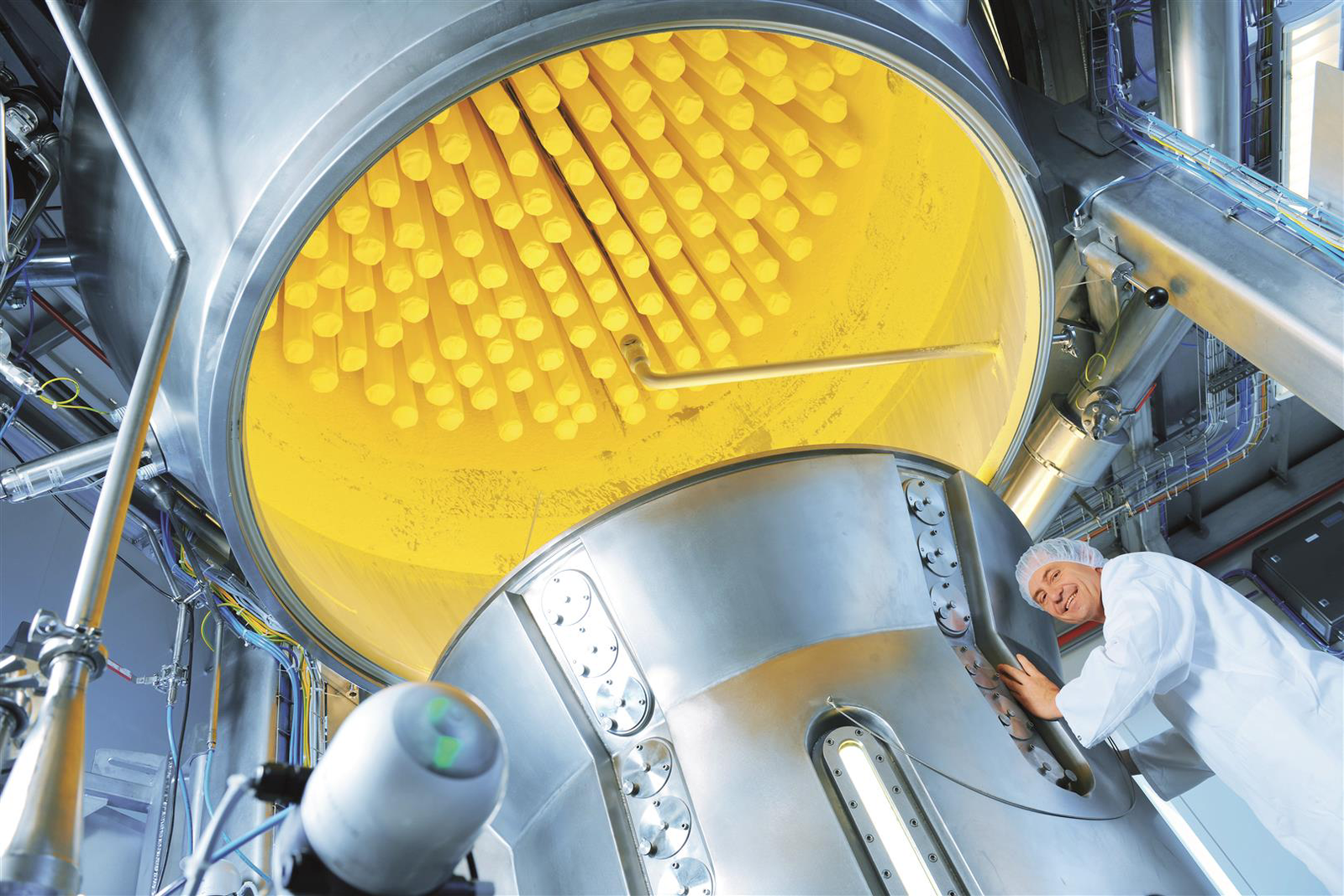Fluid bed technology for tailor-made ingredients

High-performance farm animals need high-performance feed. A technique called ‘Fluid bed ?technology’ can optimise feed ingredients and additives by adjusting product attributes.
Fluid bed technology can be used for coating, agglomerating, granulating and micro-encapsulating ingredients. In the fluid bed processor the product is sprayed in a controlled environment by the top or bottom method and subsequently dried. Warm, filtered air is sucked into the product container of the unit through a fluidised bed. A distribution plate ensures that the current of air has defined flow characteristics. In this way the starting materials are mixed intensively, creating a fluid bed. The particles can now be dried to the desired final moisture.
Optimally dosable powders
In the spray granulation process, solutions of active substances are sprayed and then dried to form powders or granulates (Figure 1). As Jörg Vernau, a process engineer at SternMaid, explains “The result is a free-flowing granulate that is dust-free, does not form lumps and is very easy to dose”. SternMaid is a contract manufacturer of ingredients in powder form and has invested some €5 million in a fluid bed processor in 2012. They own eight separate blending lines. The granulation process is also used for drying enzymes. Liquid ferment is sprayed onto a carrier and gently dried. Unlike conventional spray drying, the fluid bed process permits a free choice of the retention time. Sensitive products can therefore be dried carefully at low temperatures. The product is subjected to only moderate heat between 30 and 50 °C. No thermal damage occurs, and the activity of the enzymes is maintained. The resulting granulate of active substances has optimum processing properties.
Agglomeration for a stable mixture
Like spray granulation, agglomeration makes the product easier to handle for dosage, storage and transportation. Fine powder particles are stuck together with the sprayed liquid to make larger units. One of the benefits is the greatly superior dosing properties of the powder.
Vernau says “Wetting of the surface of the particles and simultaneous drying causes free-flowing agglomerates to form. This results in a dust-free
product with a defined bulk density that can be handled and dosed safely and reliably. Agglomeration can also prevent the individual constituents from separating when processed because the fluid bed is not only an ideal mixer: it can also “freeze” the homogeneous condition of the mixture. Unlike ordinary powder compounds with a strong tendency to separate, agglomerates ensure a homogeneous distribution of the active ingredients. In the case of feed mixes that is extremely important for the safety of the process and for achieving a quality product.”
Coating gives protective film
Besides agglomeration, a coating process is often used in which the particles are subsequently encapsulated (Figure 2). A thin, even coating protects the solid material against external influences such as temperature, oxygen or moisture. Particles can also be coated to mask an off-taste or prolong the shelf-life of the product. Moreover, liquid fats or waxes can be applied and hardened into a film with cold process air. In the coating process it is also possible to enhance the products by adding vitamins or minerals, thus ensuring that the animals are adequately supplied with important trace elements such as iron, zinc and manganese.
Unlike coating, micro-encapsulation permits the homogeneous integration of solid or liquid active substances into a carrier. This results in particles in a precisely defined state, which are resistant to outside influences. In this way, for example, substances can be given good rumen-bypass characteristics. Similarly, encapsulated drops of liquid such as omega-3 fatty acids can be protected successfully against oxidation, and the shelf-life of the products extended.
Outsourcing production
Fluid bed technology can be used for a multitude of applications. But for small companies and manufacturers with a frequently changing range it is a challenge to install an expensive fluid bed processor or constantly bring other equipment up to date. So it may be a sensible solution to outsource production.
Click on the link below to view Figure 1 and Figure 2











